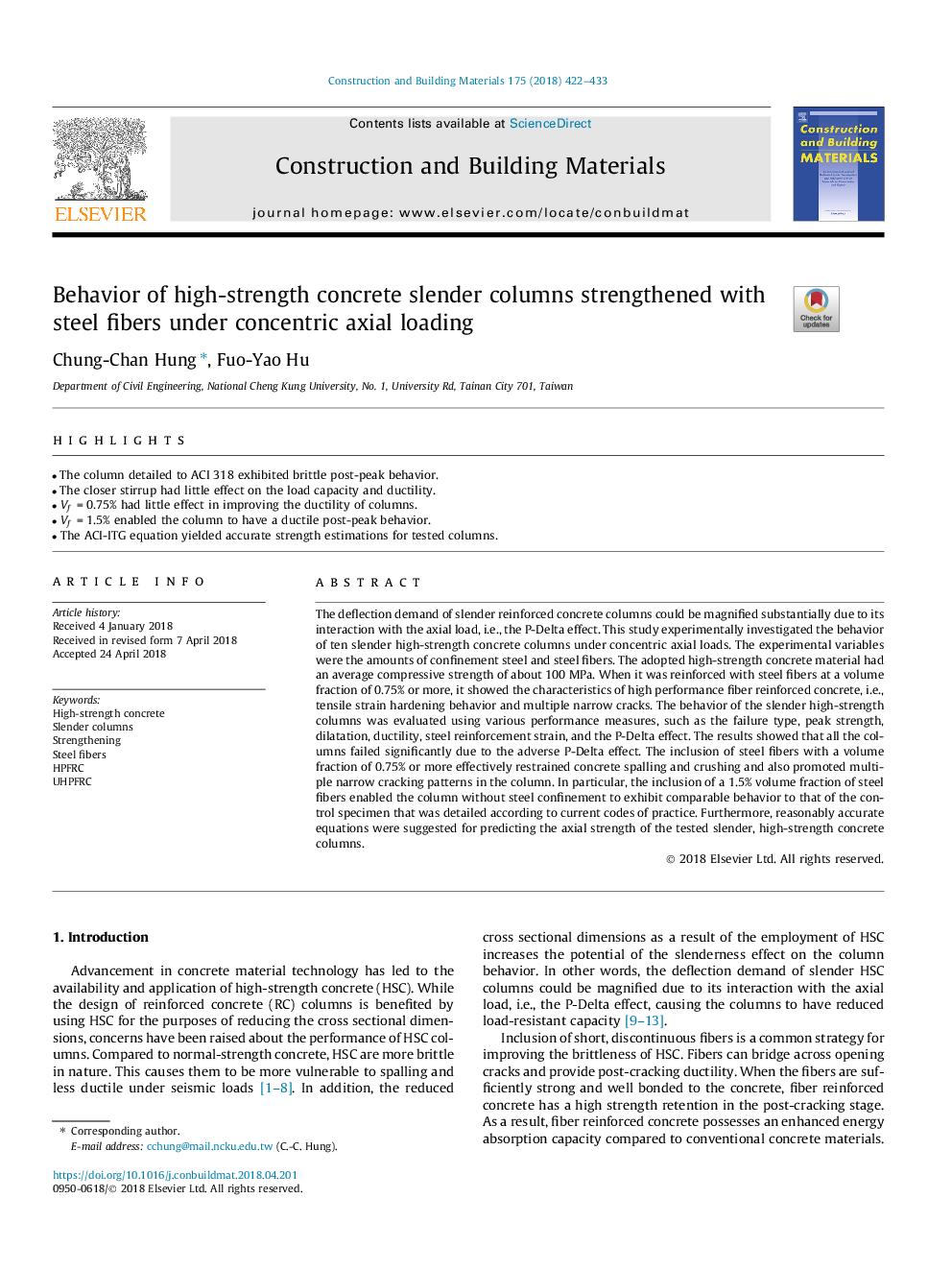| Article ID | Journal | Published Year | Pages | File Type |
|---|---|---|---|---|
| 6713516 | Construction and Building Materials | 2018 | 12 Pages |
Abstract
The deflection demand of slender reinforced concrete columns could be magnified substantially due to its interaction with the axial load, i.e., the P-Delta effect. This study experimentally investigated the behavior of ten slender high-strength concrete columns under concentric axial loads. The experimental variables were the amounts of confinement steel and steel fibers. The adopted high-strength concrete material had an average compressive strength of about 100â¯MPa. When it was reinforced with steel fibers at a volume fraction of 0.75% or more, it showed the characteristics of high performance fiber reinforced concrete, i.e., tensile strain hardening behavior and multiple narrow cracks. The behavior of the slender high-strength columns was evaluated using various performance measures, such as the failure type, peak strength, dilatation, ductility, steel reinforcement strain, and the P-Delta effect. The results showed that all the columns failed significantly due to the adverse P-Delta effect. The inclusion of steel fibers with a volume fraction of 0.75% or more effectively restrained concrete spalling and crushing and also promoted multiple narrow cracking patterns in the column. In particular, the inclusion of a 1.5% volume fraction of steel fibers enabled the column without steel confinement to exhibit comparable behavior to that of the control specimen that was detailed according to current codes of practice. Furthermore, reasonably accurate equations were suggested for predicting the axial strength of the tested slender, high-strength concrete columns.
Related Topics
Physical Sciences and Engineering
Engineering
Civil and Structural Engineering
Authors
Chung-Chan Hung, Fuo-Yao Hu,
